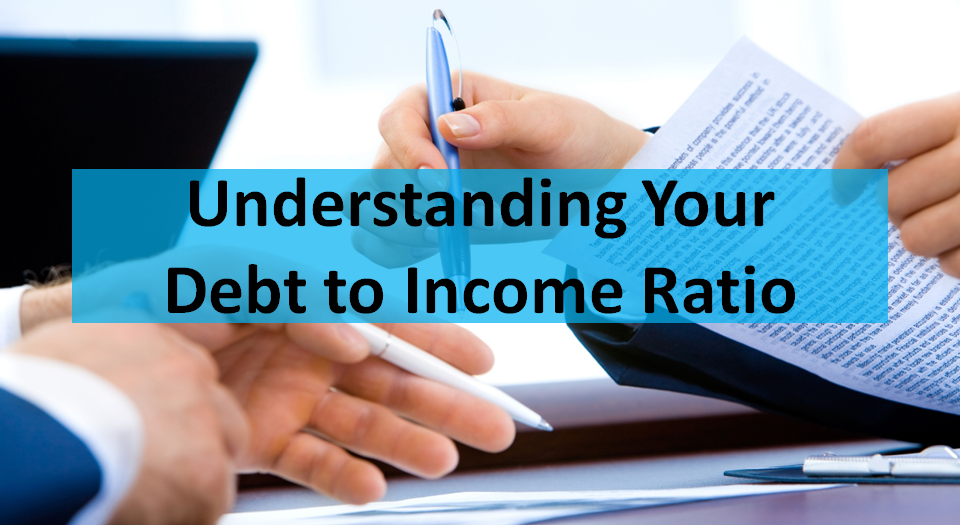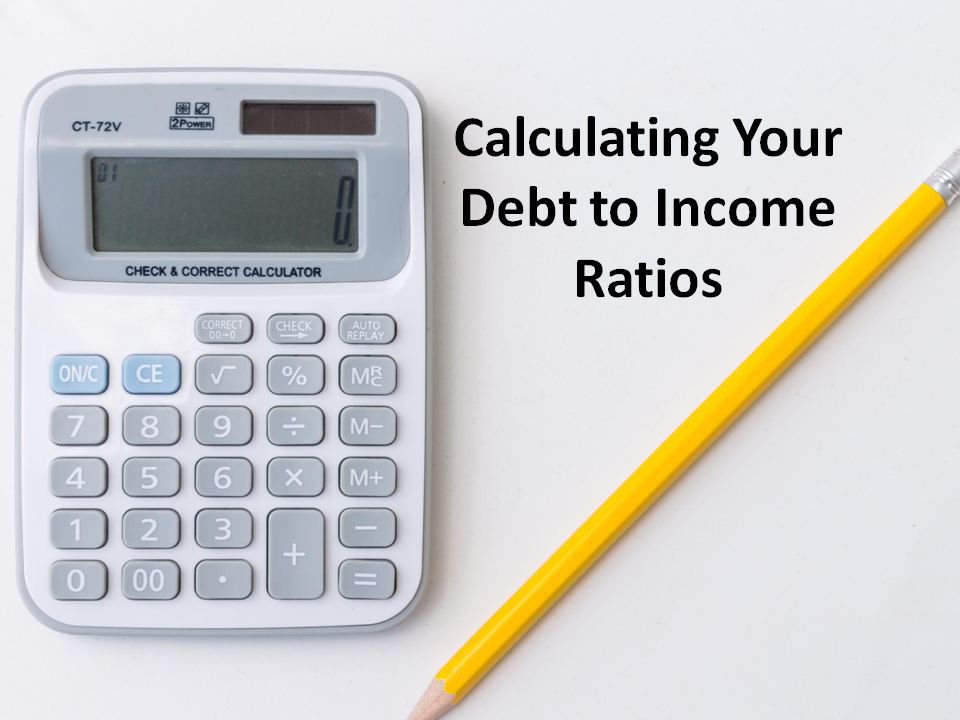Understanding Your Debt to Income Ratio (DTI)

Understanding your Debt to Income Ratio (DTI)
Your Debt to Income Ratio is used by mortgage lenders to determine how much money you can borrower for the purchase or refinance of a home. Your Debt to Income Ratio is abbreviated as DTI for short. The DTI is a comparison of your gross monthly income to your monthly liability payments. Mortgage Lenders use two Debt to Income ratios when determining if you qualify for a mortgage loan: Housing DTI and Total DTI. If you have questions about qualifying for a mortgage loan or would like to get pre-approved, call 302-703-0727 or APPLY ONLINE.
Your Housing Debt to Income Ratio
Your housing Debt to Income Ratio is calculated by taking your gross monthly income and comparing it to your new mortgage payment of principle, interest, property taxes, homeowners insurance and mortgage insurance if applicable (PITI & MI). Below is sample calculation:
Gross Monthly Income = $5,000
New Mortgage Payment of (PITI & MI) = $2,000
Formula = PITI / Gross Income x 100%
$2,000 / $5,000 = 0.4 x 100 = 40%
In this example the housing payment is 40% of the gross monthly income so DTI = 40%
Your Total Debt to Income Ratio
Your Total Debt to Income Ratio is calculated by comparing your gross monthly income to your monthly housing payment as well as all the other monthly liabilities included on your credit report as well as any other obligations such as judgement payments, tax liens and/or child support or alimony. Below is sample calculation:
Gross Monthly Income – $5,000
New Mortgage Payment of (PITI & MI) = $2,000
Total Other Liabilities from Credit Report – $1,000
Formula = (Housing Payment + Other Liabilities) / Gross Monthly Income x 100
($2,000 + $1,000) / $5,0000 = 0.60 x 100 = 60%
In this example the total debt to income ratio is 60%. This means that 60% of the gross monthly income is going to be spent on the monthly mortgage payment plus other required monthly payments from liabilities on the credit report.
What is the Maximum Debt to Income Ratio to Qualify for a Mortgage?
When determining the allowable debt to income ratio for qualifying for a mortgage there are several factors that determine what your ratios can be. The following factors affect the maximum allowable DTI:
- Loan Type
- Credit Score
- Automated Underwriting Approval
- Down Payment
- Cash Reserves
- Down Payment Assistance Program
The general overall guideline for the debt to income ratio is 31% for housing payment and 43% for total debt. This is expressed as 31/43. A borrower with ratios at or below 31/43 should have no challenges paying their mortgage payment and their other obligations every month and the risk to the lender therefore is very low. Different loan programs will allow borrowers to borrower more than the guideline ratios. Below are some general guidelines for each loan type:
FHA Loan DTI
FHA loans allow for very high debt to income ratios as designed for first time home buyers who naturally have higher DTI ratios because their housing payment is a much higher percentage of their income. FHA will allow a housing DTI of up to 46.9% and a total debt to income ratio of up to 56.9%. In order to get approved with ratios this high, the loan file MUST receive an Approve/Eligible response from the automated underwriting system. If the loan file receives a Refer/Eligible response then the allowable DTI ratios are much lower.
VA Loan DTI
VA Loans or Veteran Loans also allow for high debt to income ratios because they use a secondary qualifying factor called residual income. If the veteran is meeting the residual income calculation for the loan as required by the VA based on family size then the underwriter can approved the debt to income ratio if the file makes sense. So there is technically no maximum debt to income ratio on a VA loan if veteran is meeting the residual income requirement.
Conventional Loan DTI
Conventional loans have stricter debt to income ratios than FHA Loans or VA Loans. Conventional loans typically have a maximum total debt to income ratio of 45% but for some loan programs can go as high as 50%. Conventional loans have a minimum 620 credit score but higher credit scores are required to go over 45% total debt to income ratio.
USDA Loan DTI
USDA Loans limit the maximum housing debt to income ratio to 29% and the total debt to income ratio to 41%. Since USDA requires 0% down payment it is much stricter on the DTI ratios to qualify. If a borrower has a credit score above 660 than it is possible to exceed the 41% total debt to income ratio guideline.
Jumbo Loan DTI
Jumbo Loans typically require higher credit scores and more down payment than other loan types. Most jumbo loans have a maximum total debt to income ratio of 43%.

What is NOT Counted in Your Debt to Income Ratio?
The Debt to Income Ratio used by your mortgage lender does not include all the bills that you pay so does not give you a complete picture of what you can afford to spend on a mortgage payment. The first thing a borrower must consider is that the lender is using the gross monthly income which is not what a borrower typically brings home.
The borrower should do a household budget to calculate more accurately what is the maximum mortgage payment they should pay. A household budget takes into account items like groceries, car insurance, utilities, gas, clothes, etc.
If you have questions about your debt to income ratio, qualifying for a mortgage or would like to get started on a mortgage pre-approval, call the John Thomas Team at 302-703-0727 or get started online at http://www.PRMILoanApplication.com

